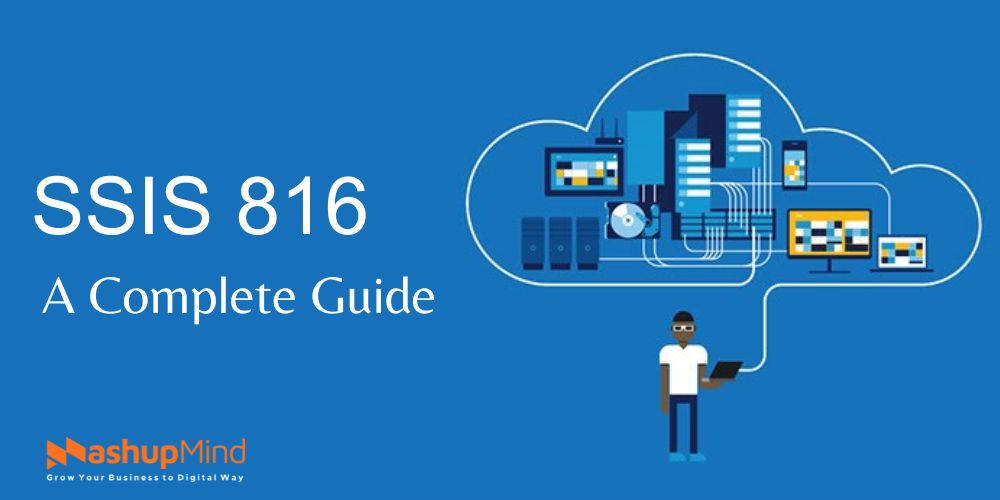ssis-816, a robust Microsoft tool, is crafted to simplify and enhance data management tasks.
2019 SSIS has come with some important new features that will be beneficial in your data integration projects. No matter how long you have been using this kind of technology, it is important for every user to know at what stage SSIS currently is. 2019 provides new possibilities for Hadoop data processing, brings enhancements to toolset development, and scales out workloads as well as package management in SSIS.
In this article, we will explore the meaning, benefits, and features of ssis-816.
ssis-816: What is it?
2016 version of SQL Server Integration Services is the latest edition of Microsoft’ enterprise data integration platform and it can also be referred to as SSIS 816. 2016 version released at the end of 2016, SSIS improves upon previous versions by enhancing performance scale and ease of use.
The Features of ssis 816
Distributed Execution
One of the main features of SSIS 816 is its capacity to spread out the execution of SSIS packages over several servers. Because it enables the simultaneous processing of jobs, this unique feature is useful for handling large-scale ETL procedures and enhances speed. This tool distributes the burden around servers to maximize task execution and minimize the time needed for intricate ETL operations.
Efficiency gradually increases as a result. Businesses dealing with big amounts of data will find this distributed execution technique extremely helpful as it ensures speedier data integration procedures and optimizes resource utilization.
Streamlined Management
SSIS-816 unifies the administrative interface and centralizes the execution procedure. Administrators may simply monitor the whole SSIS Scale Out system from this one spot and address any issues that may occur. Centralized management facilitates the handling of intricate scale-out ETL (Extract, Transform, Load) operations, resulting in a more organized and seamless system administration process.
This unified approach makes it simpler to access and manage every component of the SSIS Scale Out ecosystem. Administrators can handle the complexities of scaling out ETL methods much more easily.
Similarly, centralized control not only makes administrative tasks simple but enhances the robustness and control ability of monitoring, and troubleshooting processes.
Simplified Administration Workflow:
SSIS-816 offers a single administration interface and centralized execution process. With the help of this, administrators can derive an easy overview of the entire SSIS Scale Out system and that makes it easier to resolve problems. Centralized management makes dealing with intricate scale-out ETL operations easier and procedures and promotes a more structured system administration process.
Enhanced Throughput:
816’s distributed design makes the ETL (Extract, Transform, Load) procedures much more efficient. It enables parallel execution across multiple servers, thus increasing the speed of data integration compared to traditional consecutive activities carried out on one server at a time. By employing a parallel technique, data integration operations can be carried out faster and more efficiently by reducing processing times.
Project deployment to Azure
SSIS projects may now be immediately deployed to Azure SQL Managed Instance, Azure SQL Database, and Azure SQL Data Warehouse. This enables you to move and elevate SSIS workloads from on-premises to the cloud.
Incremental package deployment
Deployment is accelerated by redistributing just changed packages.
Data tap
With the help of the new data tap task, pull data from a variety of sources with ease. There are more than 70 built-in connections, including ones for productivity tools, marketing, and social networking sites.
Transformation of row sampling
Random samples of data may be easily taken throughout the data flow, which is helpful for profiling and testing.
Microsoft Feature Pack
It allows Extra parts for integrating with Blob Storage, HDInsight, Data Lake Store, and other Azure services.
Read here : Best Android Video Editors Apps
Benefits of ssis-816
If you are still confused about why we should switch to SSIS 816, these are the benefits it provides:
Remarkable Scalability
SSIS 816 is an excellent option to manage growing amounts of data, with superb scalability. It seamlessly adds servers, and this enables organizations to increase their IT infrastructures. ETL operations can handle increasing workloads while retaining efficiency.
Improved Performance
With its ability to delegate application execution, SSIS 816 shows outstanding performance optimization. It considerably speeds up the process of data transformation and collection from multiple sources.
Enhancing Resource Efficiency
SSIS 816 emphasizes resource efficiency and enables companies to use their processing capacity effectively. The distributed computing approach helps to overcome the limitations of a single large server, which slows down processes and reduces efficiency in terms of consumption across an organization.
Budget Friendly Infrastructure
SSIS 816 improves performance and saves money by streamlining IT infrastructures. The demand for standalone high performing servers is reduced by clusters of cheaper less powerful computers.
Parallel Processing
The speed superiority of SSIS 816 comes from parallel processing. This capability let the execution of operations parallel that speeds up data transfer and transformation across different servers.
Adaptability to Peak Performance
SSIS 816 design enables the addition of further servers, adapting to altering business needs effortlessly. This adaptability plays a vital role in achieving high performance, especially when one considers the fast-moving corporate environments.
Flexible IT System
Computational resources emphasizing the strategic resource management principles are provided for firms through SSIS 816, which aligns computing power to match particular processing needs. This enables the IT system to be more flexible and adaptive.
Best Practices to use ssis-816
SSIS 816 is a powerful and flexible tool for data integration, but it also requires some best practices to use it effectively and efficiently, such as:
Optimization of performance
SSIS 816 can optimize its performance by following some tips and techniques, such as:
1)Use parallelism
816 As SSIS Simon can run several tasks or packages simultaneously, it helps to cut the total execution time and improves the efficiency of resources.
2) Use buffers
I/O of the disks and network traffic will be reduced by the use of 816 SSIS buffers that shall serve to store data memory.
Find here: Guide To Find Out The Reverse Video Search Method
Avoiding common mistakes
This tool can avoid some common mistakes that can cause errors or inefficiencies in the ETL processes, such as:
Use error handling
Since This tool is engaged in the process of ETL execution, this frame work can fall back to error handling so as not onlyto handle errors but also to log them or send out relevant alerts whenever tasks fail.
Use data conversion
In order to prevent data corruption or lost, This tool can use proper way of converting its typology and grounds.
Use data validation
This tool can utilize data checking to validate the integrity and quality of the data in order to make sure that they are error-free or do not have any anomalies before loading them into computer memory for further processing.
Conclusion
This is an ETL tool for data integration, extraction, transformation, and loading. It provides a range of features and benefits for data professionals; including improved speed and adaptability, intuitive user interface design, powerful data cleaning and transformation effects accomplished in real-time as well as strong security mechanisms.
Some best practices also need to be used in this tool, such as performance optimization and avoidance of common errors.
FAQs
What is SSIS used for?
Ans : SSIS is used for the process of ETL where data gets extracted from various sources like SQL Server database, Oracle database as well as Excel files. It utilizes cleaning and consolidation procedures to make data more informative.
What are the 3 types of SSIS involved?
Ans : SSIS conversions come in three different types: fully-blocking, semi-blocking, and non-blocking. There are two types of dataflow components: synchronous and asynchronous.







